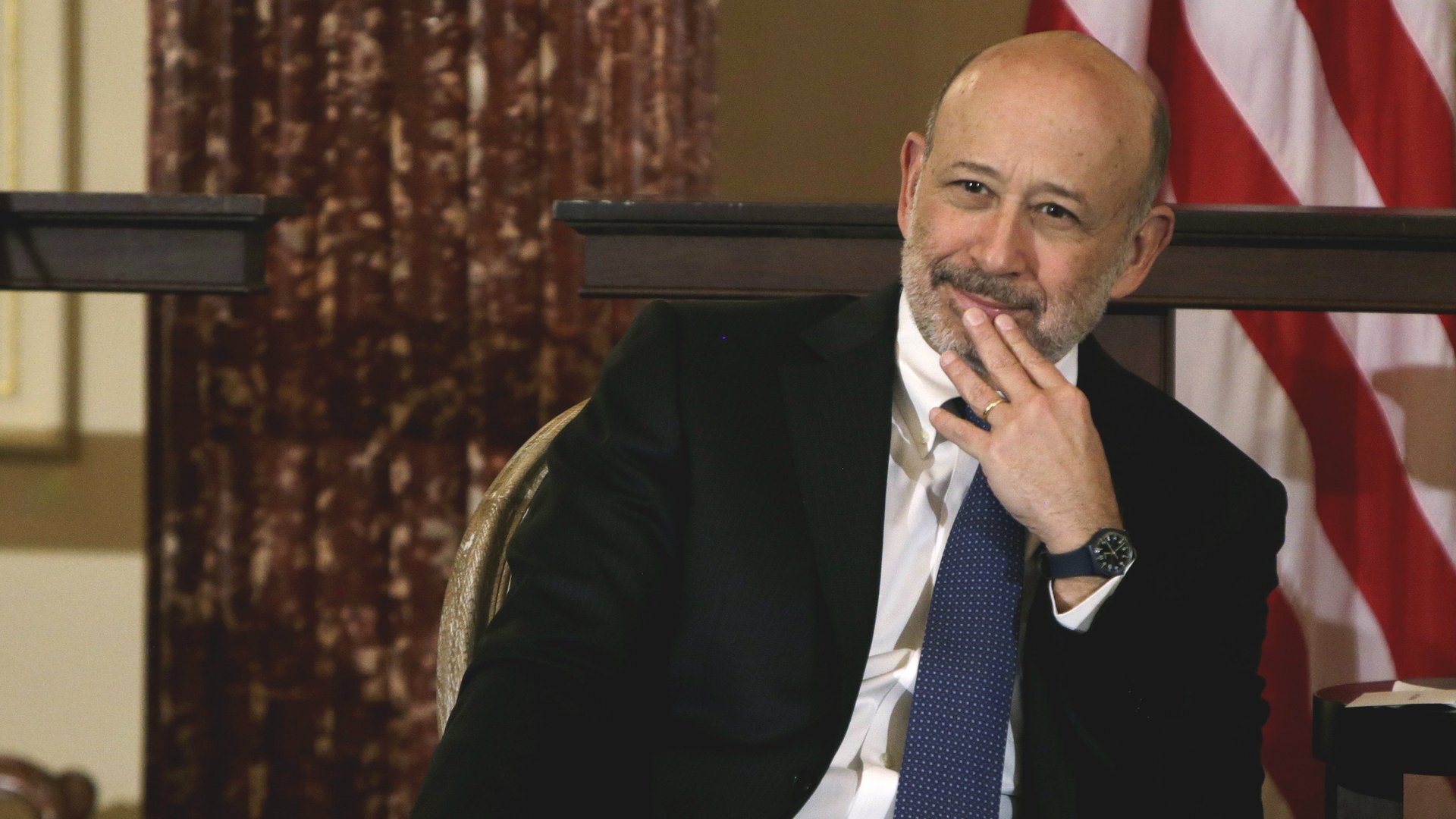Lloyd Blankfein looks ready to leave Goldman Sachs, and the market is fine with it
Perhaps the ultimate ego boost for a long-serving CEO is a plunging stock price when your impending retirement is revealed, while a rally would be the market’s way of slapping you in the face. News that Goldman Sachs CEO Lloyd Blankfein will step down by the end of the year was neither.


Perhaps the ultimate ego boost for a long-serving CEO is a plunging stock price when your impending retirement is revealed, while a rally would be the market’s way of slapping you in the face. News that Goldman Sachs CEO Lloyd Blankfein will step down by the end of the year was neither.
After the Wall Street Journal broke the story (paywall), Goldman’s shares registered a brief downward blip and then went on about their business.
It would have been surprising if it had played out any other way. Goldman already appears to have its choice of successors in place. The Journal, citing unnamed sources, says the New York-based bank will choose from its two co-presidents, Harvey Schwartz and David Solomon.
Howard Marks, the co-chairman of Oaktree Capital, told Bloomberg Television that both co-presidents are “terrific,” and that he sees little risk of Goldman losing its culture of being “long-term greedy.” (He meant it as a compliment, describing an ethos of making decisions in the short run that benefit clients in order to maximize value in the long run for the bank.)
Blankfein, who joined Goldman in 1982 and became CEO in 2006, will probably be remembered for steering the firm through the financial crisis and its aftermath, when investment banks were squarely blamed for the ruin. Amid the turmoil, after Bear Stearns and Merrill Lynch were absorbed by other big lenders and Lehman Brothers collapsed, Goldman and its white-shoe arch-rival Morgan Stanley converted from independent investment banks to bank holding companies, giving them access to greater US government support during the crisis, and a lot more regulation afterward.
Up until then, Goldman’s traders had been widely revered as the smartest on Wall Street. Sentiment turned as it emerged that the firm had shorted the US housing market and made $2.9 billion on proprietary trades related to AIG’s $182 billion federal bailout.
Fortunately, recent years have been considerably less interesting. Washington responded to the crisis with a slew of regulations that made Goldman’s trading desks less profitable. Morgan Stanley adapted by quickly expanding into wealth management. Blankfein, meanwhile, was criticized for not restructuring the bank swiftly enough as its trading operations stumbled.
But as Wall Street became less risky, Goldman did move into more boring businesses. The company is now making better use of its banking license by lending more widely to consumers, a business from which it expects to generate some $2 billion in additional revenue in the coming years. Blankfein himself sometimes calls customers of the bank’s retail-lending arm, a big departure from pitching deals to the world’s largest hedge funds and corporations.
At 63, Blankfein is one of the longest-serving chiefs currently on Wall Street; only JPMorgan Chase’s Jamie Dimon has been at the helm for longer. Regardless of who gets promoted to replace him, the bank that Blankfein’s successor takes over will be very different from the swaggering, swashbuckling firm that Blankfein took over 12 years ago.
Where will Blankfein go next? Policy roles awaited his recent successors, with Henry Paulson serving as US Treasury secretary under George W. Bush and Jon Corzine serving as a senator from New Jersey and, later, the state’s governor.
Given Blankfein’s sharp criticism of the current White House administration, it’s unlikely he would turn up in a role in Washington anytime soon. (If he were thinking otherwise, former Goldman president and COO Gary Cohn might disabuse him of the notion; a frustrated Cohn just recently stepped down as US president Donald Trump’s top economic advisor.)
Whatever Blankfein does next, it hopefully won’t interfere with his ability to dispense financial commentary, dad jokes, and sick burns on Twitter.